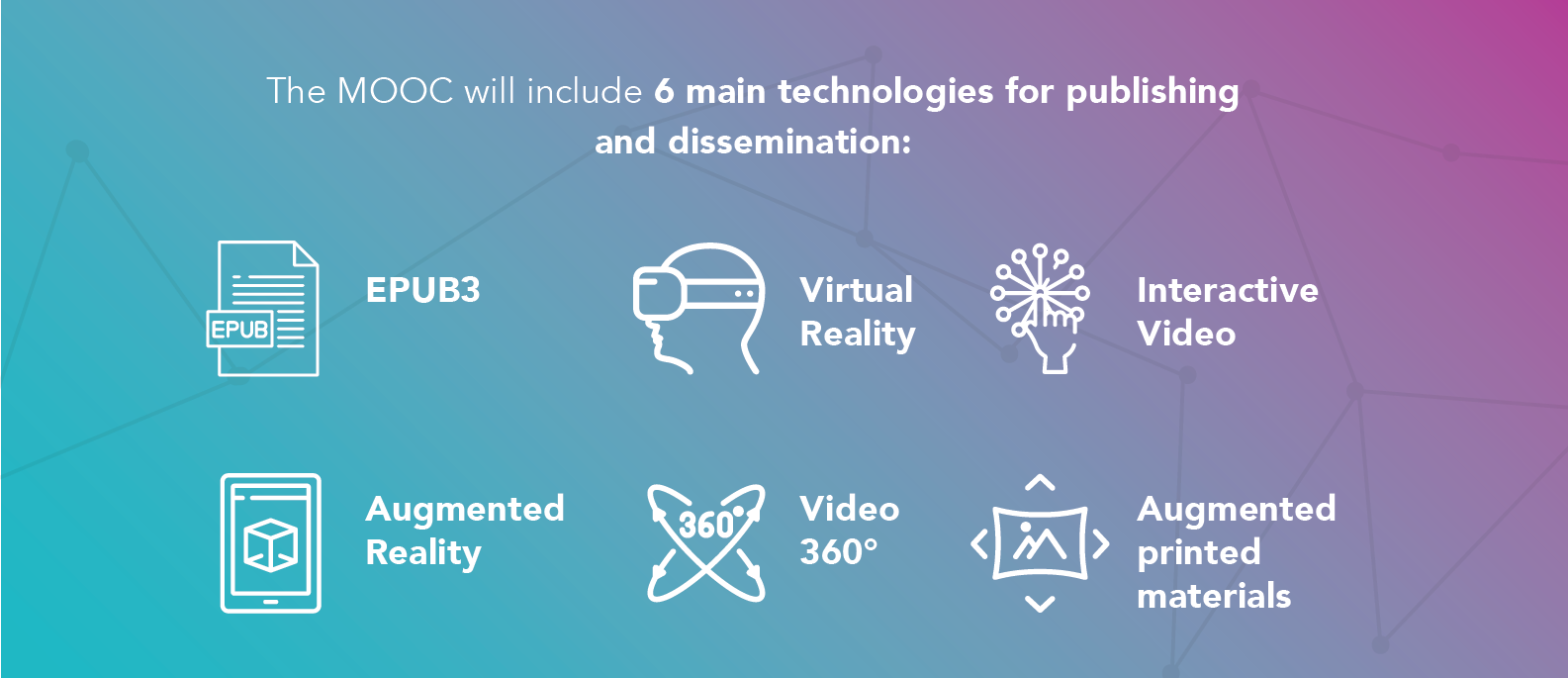It is an indisputable fact, technology is infiltrating everywhere in our lives, sometimes even where we least expect it. Our reactions and feelings regarding this trend are varied: some feel overwhelmed, others are fascinated. There are those who see a lot of hope and opportunities in it and others who do not even want to hear about it. Anyway, the trend is there, so rather than demonizing it, why not try to make the most out of it?
Among the technologies that have recently boomed is what is called Virtual Reality or VR. The VR experiences are 3D simulations that immerse us in a 360° virtual world and require virtual reality headsets (prices ranging from 2€ for a Google cardboard to over 800€ for very sophisticated headsets). The three factors on which VR is based and which distinguish it from films, computer-based video games and others are:
- Immersion (via a virtual reality headset and a 360° visual)
- Interaction (through scenarios, headphones and a controller that captures our movements and integrates them into the experience)
- and finally, a virtual world (which can be inspired by the real world or completely born out of the creators’ imagination)
We have mainly heard about VR in the world of games or shopping, for commercial purposes. However, studies gradually show that the areas of application can be much more varied and beneficial than what has been done so far. We found a study by the University of Maryland that shows that the human brain memorizes 9% better during VR learning than on any other 2D surface.
So why deprive us of this opportunity and not exploit it in less conventional and commercial areas?
VR can be a way to make people have unprecedented experience and feel things in a virtual world that could be very similar to other’s reality. It can therefore be used to raise awareness, develop empathy, tolerance and acceptance of yourself and others.
To give a few examples:
To fight racism: Courtney Cogburn, a teacher’s assistant at Columbia School of Social Work developed a 12-minute virtual reality film in which the user plays a 15-year-old African American student who is a victim of racial discrimination and unjustified and disproportionate police violence. The objective is to make a frighteningly unfair but real situation happen so that the user feels personally involved and can feel what others may be going through. The immersive virtual experience can create a psychological impact that develops empathy, allows us to identify with someone other than ourselves and puts our ways of thinking and conceptions into perspective.
In terms of raising awareness of inclusion and in a therapeutic registry, VR can also be an interesting and promising tool. The National Autistic Society from UK has developed a video that uses VR to allow any individual to experience or understand what a person with autism may feel in certain situations: film here.
Researchers at Shanghai’s Jiao Tong University in partnership with a digital company have set up a virtual reality system (tested on 1,000 children aged 3 to 12) that is a new type of therapy that involves children with autism. The goal is to improve their perception of other individuals, to approach different environments in a more serene way and to overcome certain symptoms as much as possible. VR allows to recreate situations and environments at lower costs with always the reassuring possibility to leave whenever you want since everything is virtual and without real physical involvement.
VR is also tested in psychiatry today to treat or relieve certain mental health disorders. A study by Oxford University showed that for people suffering from vertigo (acrophobia), confronting them with their phobia through VR without any risk has reduced their fear of heights by 66%. Researchers are now considering using VR to treat other mental health problems such as depression, anorexia, schizophrenia or anxiety.
In general, the use of VR seems very promising to destigmatize, to help understand certain pathologies or even to develop empathy. It can also be an experience that teaches us how to help and react in some specific situations. Getting out of our own character and identifying with someone other than ourselves / even putting ourselves in someone else’s shoes can change or improve our own perceptions and, in some cases, promote self-esteem and that of others.
In conclusion, it should be noted that there is still a multitude of other possible uses of VR. We are in the middle of a phase of exploration of its potential. Unfortunately, we cannot cover everything in this article.
Nevertheless, it is also essential to remember that in terms of risks, with VR being a relatively new technology, we do not necessarily know all the impacts it can have on our brains yet. It is highly recommended not to expose children under 13 years of age to virtual reality and to avoid any content that may present negative or violent experiences.
Learn more about VR and new technologies implications:
Logopsycom participates in DIMPA project that gathers VET providers and digital specialists to develop a training that can tackle the European shortage in digital skills, beyond borders and across professional sectors. To make sure the impact of the DIMPA project is sustainable, we will also train teachers and trainers. We will design a MOOC that can be easily integrated into VET curricula with appropriate certification (worth 1 ECVET).
In addition, we will pay a special attention to make the content available for all in order to avoid leaving learners on the side. Therefore, the content that will be created will be designed to be adapted as much as possible for individuals with Specific Learning Disorders (SLD), who represent 8 to 15% of the population in Europe.

![]() Follow us on Facebook: @dimpapro
Follow us on Facebook: @dimpapro
#DIMPAproject #VR #AR #erasmusplus
Visit the project website : www.dimpaproject.eu
In collaboration with: The Berufsförderungsinstitut Oberösterreich (BFI-OÖ), Les Apprimeurs, AKETH [Developmental Centre Of Thessaly – D.C.T.], CEPS Projectes Socials, MBCF

